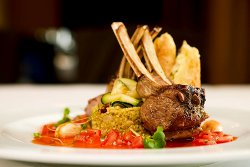The Sharing Economy Is Now Invading Our Kitchens
 Disruptive innovation is a hot topic across the food and beverage industry. While many marketers are still trying to figure out how to be the next Chobani, a brand that is already transforming U.S. culture in ways that have yet to be fully understood, in another industry there is the story of that pesky little start-up known as Uber.
Disruptive innovation is a hot topic across the food and beverage industry. While many marketers are still trying to figure out how to be the next Chobani, a brand that is already transforming U.S. culture in ways that have yet to be fully understood, in another industry there is the story of that pesky little start-up known as Uber.
It’s debatable whether Uber alone invented the rapidly evolving sharing economy, much in the same way one might argue that Amazon invented Internet commerce, but there is no question that Uber’s own business model has been disruptive with a capital “D.”
Uber has disrupted the traditional ride-sharing business model through its mobile-app-based networking service by transferring the control of the transaction to the consumer.
The disruption that Uber and others like Airbnb (the online lodging rental company) is causing has certainly shed a critical spotlight on the concept of “sharing economy.”
With so much peer-to-peer disruption underway in other industries, what does this portend for food and eating culture in the U.S. marketplace?
The idea of a “sharing economy” isn’t so much about sharing products or services as it is about new kinds of relationships breaking down the wall between buyer and seller; about allowing others into one’s life in ways previously not considered “normal” – at least from a cultural perspective.
Indeed, many of these opportunities have existed for years; it’s just taken the sharing revolution to make them more socially acceptable.
For example, Instacart has generated a lot of interest (and investor capital) with its personal food shopping service pairing independent contract drivers with shoppers looking for the convenience of home grocery delivery. Whereas having your own personal shopper was once considered one of the perks of being rich, now almost all of us can afford this luxury.
In similar fashion, a start-up called Kitchensurfing is attempting to blur the ever-vanishing barrier between chef and diner even further by connecting customers with a stable of chefs who will help you create a personalized dining experience in your home.
The chefs help create the menu and then do all of the shopping, prepping, cooking and cleanup, leaving you to enjoy a casual or fine dining experience in the comfort of your dining room. Yes, with Kitchensurfing you can now experience what it’s like to have your own personal chef – for a family-style dinner or dinner party.
What’s the cultural disruption at work here?
It appears that consumers are increasingly becoming at ease with inviting complete strangers into their homes to share culinary experiences. This may seem intuitive, but it’s not.
Think about it: The kitchen, once the sacred center of the household’s family and close friends, is now the work space of some outsider, albeit a culinary professional.
While some folks may choose to simply enjoy the luxury, many more prefer to actively engage with the experience, perhaps learning about new techniques or flavors as the chef works in their kitchen. In some cases, this activity may even become the focal point for a casual dinner party.
The Huffington Post could not have emphasized this shift more clearly when they chose as their headline for a review of these services: “Why It's Totally NOT Weird To Let Strangers Cook In Your House”
Recent coverage of Kitchensurfing in The New York Times also echoed this emerging shift:
“For some customers, those experiences are unexpectedly personal. The host in Astoria, a 32-year-old software developer, reported that the meeting initially bristled with awkwardness. ‘The whole time I was thinking, “Do I help her?”’ he recalled. But by mealtime, he said: ‘It was basically like we hired a friend that could cook really well and then we all hung out and ate.’”
Piece by piece, disruptive innovative (in this case, sharing economy) continues to chip away at our cultural traditions in the food world and beyond.
This has fascinating implications for those interested in how food trends are spreading and shaping consumers’ food knowledge, passion, habits and practices within our broader food culture. We know consumers learn from their experiences dining out, food media (TV and digital), cooking with their friends, shopping, cooking classes and so forth.
And we can evaluate those vectors and decide some are more important than others, depending on the trend and how it might play out across cuisines, cooking styles or product categories.
But think of the potential impact of having a chef arrive at your house, prepare a meal and explain to all of your guests why they should use only “X” olive oil, never again use dried spices or always substitute shallots for onions. This could bring together all of the vectors identified above into a cyclone of potential influence.
We can’t predict whether or not the ability to rent a personal chef will become a mainstream proposition. And it’s too early to tell the extent to which these developments will influence food trends, and planning, shopping, and preparing habits and practices.
What is potentially more important to those of us in the CPG, food retailing and food service industries is that we’re getting an early glimpse into all of the change going on around us.
The sharing economy is but one example of how disruptive innovation can be an influential change agent in food culture and why our attention remains riveted on identifying developments underlying cultural change.
